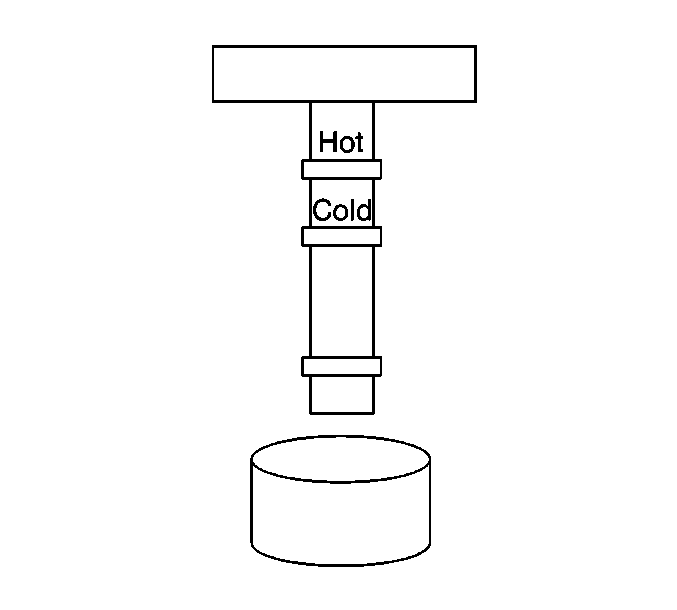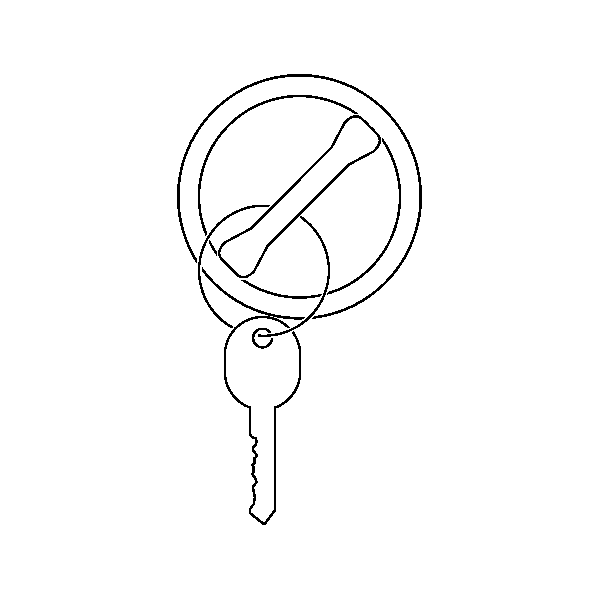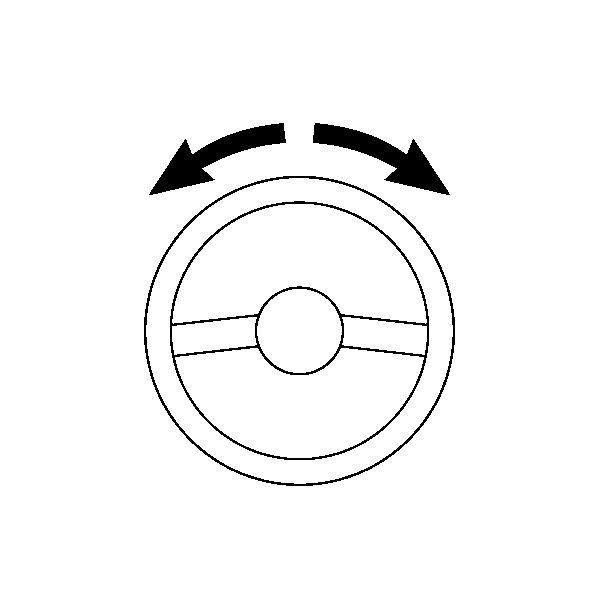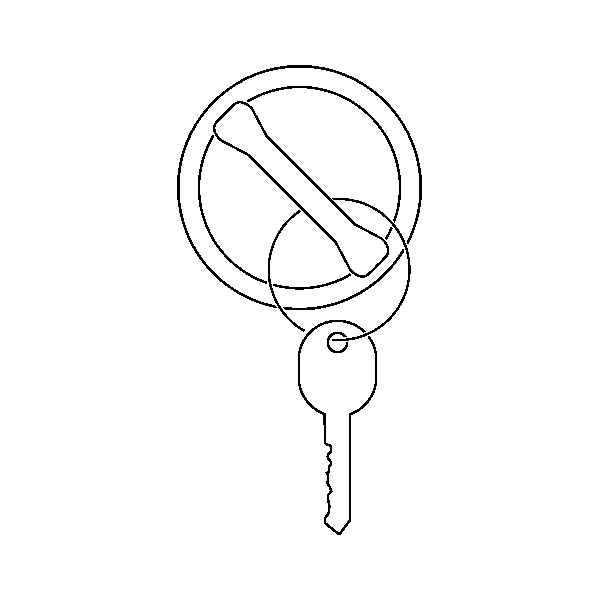Bleed Procedure
Tools Required
| • | J 43485 Power
Steering Bleeder Adapter |
Important: Use clean, new power steering fluid only. Refer to
Fluid Specifications
.
| • | Bleed the power steering system for the following reasons: |
| - | Fluid line disconnected |
| - | Steering system noise occurs |
| - | Prevention of pump damage |
| - | Proper system operation |
| | Important: Hoses touching the frame, body or engine can cause system noise.
|
| • | The hoses must not touch any other part of the vehicle. |
Important: Loose connections may not leak, but could allow air into the steering
system.
- Verify that all hose connections are tight.

Important: Maintain the power steering fluid level throughout the bleed procedure.
- Remove the power steering pump reservoir cap.
- Fill the power steering pump reservoir with power steering fluid
to the "FULL COLD" level.

- Reinstall the power steering
pump reservoir cap.
- Start the engine. Allow the engine to idle.
- Turn off the engine.
- Verify the power steering fluid level. Repeat steps 8 through
10 until the power steering fluid stabilizes.

- Start the engine. Allow
the engine to idle.
Important: Do not turn steering wheel to lock.
- Turn the steering wheel 180-360 degrees in both directions
5 times.

- Switch the ignition off.

- Remove the power steering
pump reservoir cap and verify the power steering fluid level. Refer to
Checking and Adding Power Steering Fluid
.

- Reinstall the power steering
pump reservoir cap.
Special Conditions Procedure

- If the vacuum continues
to drop, remove the power steering pressure line and the power steering return
hose from the power steering pump . Refer to
Power Steering Pressure Pipe/Hose Replacement
or
Power Steering Return Hose Replacement
.
- Install the plugs (1) (2) supplied with J 43485
- Place J 43485
- Apply a vacuum of 20 Hg maximum.
- If the vacuum drops again, repair or replace the power steering
pump. Refer to
Power Steering Pump Replacement
If the vacuum holds steady, continue to check the other parts
of the power steering system.
Important: Power steering fluid must be free from bubbles. Be aware of periodic
bubbles that indicate a loose connection or leaking O-ring seal in the power
steering hoses.
Important: Power steering fluid must be free from discoloration.
- Observe the power steering fluid.
- If the condition persists, replace the following parts:
| • | The return hose O-rings |
| • | The pressure hose O-rings |
| • | The gear cylinder line O-rings |
| • | The reservoir to pump O-ring |
- Repeat the bleed procedure from the beginning.
- Drive the vehicle approximately 16 kilometers (10 miles)
to warm the system to operating temperature. Evaluate vehicle on a smooth
flat surface.
- To check for noise problems, verify the following items:
| • | There is smooth power assist. |
| • | The vehicle operates quietly. |
| • | The power steering pump maintains the proper power steering fluid
level. |
| • | There is no leaking in the steering system. |
| • | The fluid is free of foam or discoloration. |







